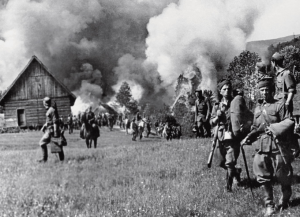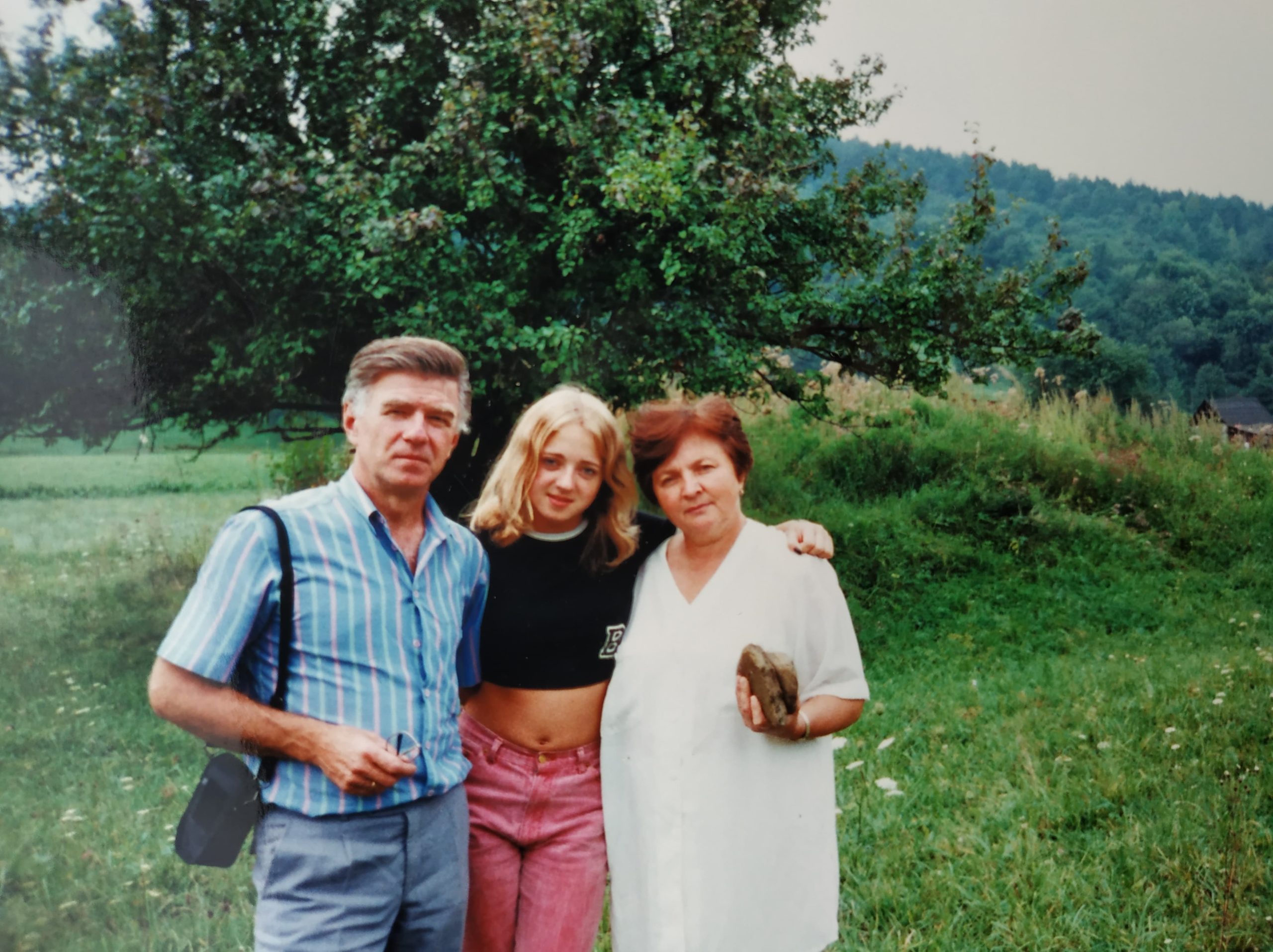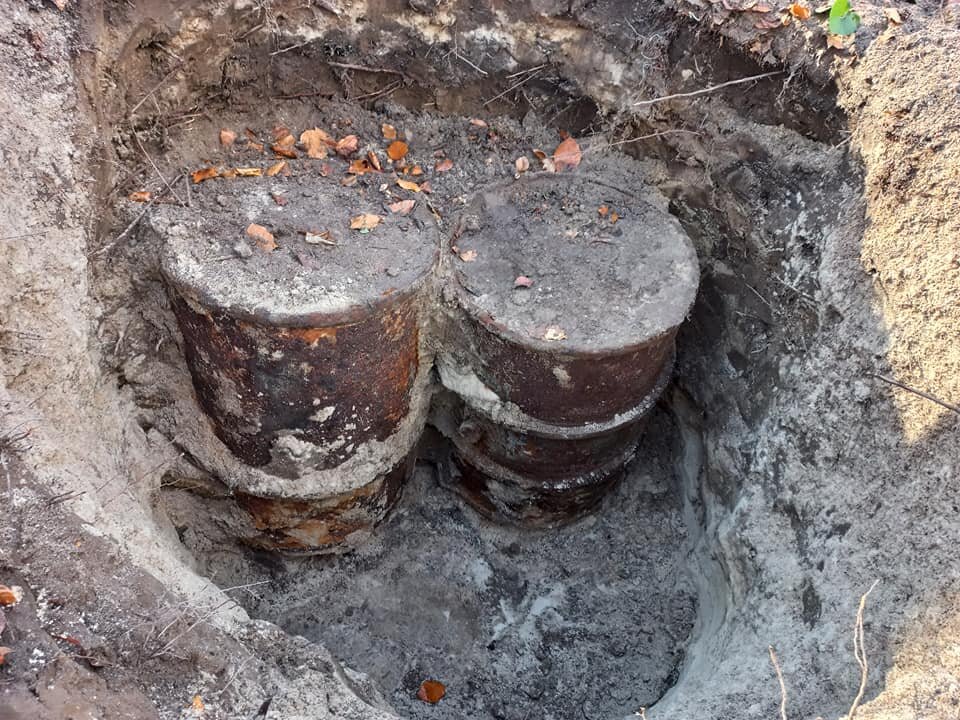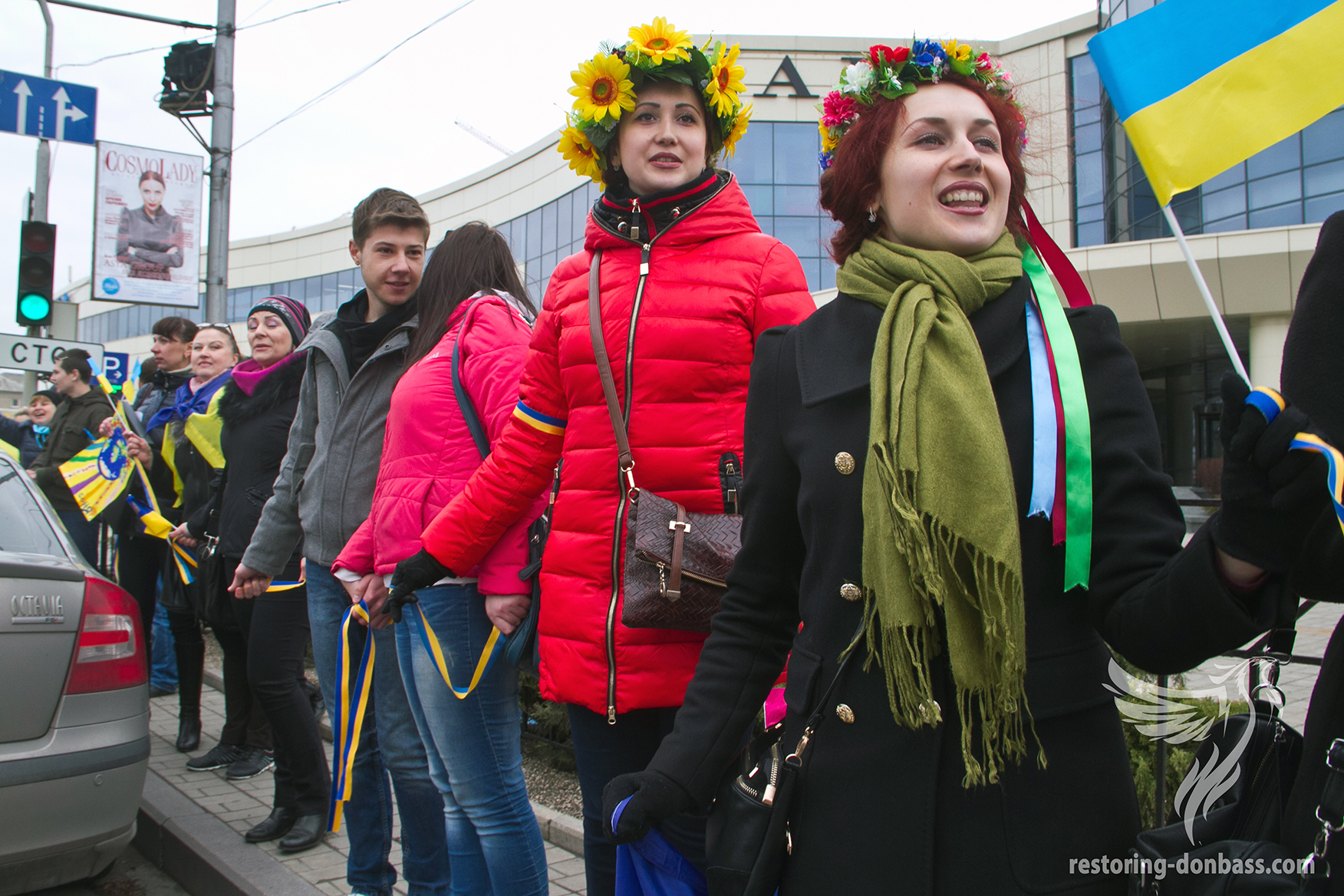Practically all journalists and academics writing about the Volyn massacres in 1943 do so in a one-sided manner. This bias is reflected in four ways:
- choosing a short time period of one year (1943) and ignoring what happened before and after;
- only criticizing Ukrainian nationalism;
- blaming only the Ukrainian side for the poor state of Polish-Ukrainian relations;
- relying primarily on Polish sources for civilian casualty figures and contrasting an allegedly more scholarly Polish Institute of National Remembrance with that of the ‘nationalistic’ Ukrainian equivalent led by Volodymyr Viatrovych who is castigated as an ‘apologist’ of extremist Ukrainian nationalism.
1. Choosing a short time period of one year (1943) and ignoring what happened before and after
First, analyses restrict their time period to only 1943 which places an advantage on Polish interpretations of the killings. Analysis of killings of Polish and Ukrainian civilians is best undertaken by dividing them into three regions. In Volyn, the Polish minority was heavily outnumbered and Ukrainian partisan forces had the upper hand leading to higher Polish casualties. In Galicia, Polish and Ukrainian partisan forces were roughly equal in strength and civilian casualties on both sides were lower and of roughly equal size. In the Zakerzon, beyond the Curzon line running from current south-eastern Poland along the Polish-Ukrainian border to east of Lublin the Polish side had the advantage and Ukrainian civilian casualties were far higher. If in Volyn the first killings were by Ukrainian units then, as Timothy Snyder writes, in Zakerzone it was Polish forces who launched the first attacks on civilians. Killings of civilians did not only happen in 1943 but throughout nearly a decade from the late 1930s to Akcja "Wisła" (Operation Vistula) ethnic cleansing of Ukrainians in spring 1947. Only focusing on 1943 ignores the context of events leading up to this year and the continuation of killings of civilians from 1944-1947.
2. Ignoring Polish nationalism and criticizing only Ukrainian nationalism
By ignoring Polish nationalism, a one-sided picture emerges in journalistic and academic writing of only Ukrainians who were extreme nationalists and Nazi collaborators. In fact, both OUN (Organisation of Ukrainian Nationalists) and AK (Home Army) began to fight against the Nazi’s at the same time in early 1942. Ukrainians defected from the German police in March 1943 ten months before Polish police in Nazi service did so. In both cases, these former Nazi policemen joined partisan units - Ukrainians joined the UPA and Poles formed a new Volyn AK division. Discussion of Volyn-43 ignores the extreme nationalism that dominated 1930s Poland in the run-up to the 1940s. This is not to excuse the massacres committed in 1943 but to ignore their background is to produce poor history. Polish National Democrats (Endecja) planned to deport Jews and assimilate Ukrainian “tribes” whom they did not consider to be a separate people. Hundreds of Orthodox Churches were burned down and destroyed in 1938-1939 and Ukrainian Orthodox civilians murdered. As Grezgorz Motyka admits, the aim of Polish nationalist partisans and communists was to implement the Endecja program of a homogenous “national state” by ethnically cleansing national minorities. The two largest minorities were Germans in the West and Ukrainians in the East. The final act in this strategy was Akcja Wisła which aimed to assimilate the ethnically cleansed 150,000 Ukrainians by not permitting more than ten percent of them to live in any village. Polish communist General Stefan Mossor was quoted as saying Akcja Wisła “resolved the Ukrainian problem in Poland once and for all.” Both sides drew up future plans for the deportation of the other sides minorities and it was a race between them who would act first. Polish and Ukrainian leaders wanted to prepare a fait d’accompli before the arrival of Soviet forces. Driving Ukrainian memory politics was the feeling they would not permit a second defeat by the Polish side, as in 1918 when they had fought but had lost the battle for Lwów (Lviv). Importantly, barely any of the academic and journalistic writing about Volyn-43 explain how a territory which, because it was part of the Russian Empire until 1917 and was not as nationally conscious as neighboring Galicia, could explode into such brutality. How did two decades of Polish misrule of its eastern borderlands transform a region dominated by the Communist Party of Western Ukraine (KPZU) into one controlled by Ukrainian nationalists? Volyn was the perfect storm for brutal killings of civilians because of its acute socio-economic poverty and class conflict between Ukrainian peasants and Polish landlords and colonists (the official term for Polish veterans given free land by the Polish government), Orthodox Ukrainians pitted against Catholic Poles and very bad inter-ethnic relations. Academics and journalists only talk of crimes committed by Ukrainian nationalist organizations OUN and UPA while largely ignoring those committed by the Polish side. ‘fighters for the independence of Ukraine in the twentieth century’ David Marples writing in the current issue of the academic journal Acta Slavica Iaponica points at the UPA’s responsibility for the mass slaughter of Polish civilians in Volyn. He writes in a long tradition of not including in such discussions the killings of Ukrainian civilians by Polish partisan groups AK, Peasant Battalions, NSZ (National Armed Forces loyal to the Endecja) and Polish Communist forces. Motyka also lays the blame for atrocities on Polish nationalist partisans and communist forces while absolving guilt by AK – which is historically inaccurate.
3. Blaming only the Ukrainian side for the poor state of Polish-Ukrainian relations
Not surprisingly because of the above, it is always the Ukrainian side which is blamed for inflaming relations with Poland. Marples follows Andreas Umland in only blaming the Ukrainian side for harming relations with Poland. Although the Polish nationalist leadership is routinely castigated by Western governments, the EU and Western media for being anti-democratic it is for some reason never blamed for inflaming relations with Ukraine. The Polish leadership has condemned the heroization of Ukrainian nationalist groups as harming relations between both countries. But, Polish partisan groups are also heroized and are nationalist in the eyes of Ukrainians.4. Relying primarily on Polish sources
The majority of those writing about Volyn-43 only cite Polish authors for the numbers of victims while ignoring both Ukrainian and Western historians of Ukraine. Marples, for example, does not cite North American historians of Ukraine. The Kyiv Post cites Polish Institute of National Remembrance historian Motyka who exaggerates the number of Polish victims (40-60,000) and grossly downplays Ukrainian casualties (2-3,000). Open Democracy uses Motyka’s inflated claim of upwards of 100,000 Polish victims without mentioning any Ukrainian casualties. Orest Subtelny uses a single source from communist Poland for his casualty figures of 60-80, 000 Poles and although referring to Ukrainian casualties, he provides no estimates for them. Polish historians such as Motyka claim inflated estimates of between 74,000 and 104,000 Poles killed by Ukrainian nationalists of whom 40,000–60,000 were in Volhynia, 30,000−40,000 in Eastern Galicia, and 4,000 in other parts of Poland (including up to 2,000 in the Kholm-Pidlachia regions). These inflated casualty figures have fed into the Polish claims of a planned “genocide” by Ukrainian nationalists of the Polish minority. The numbers of Polish and Ukrainian civilians killed in the 1940s has proven impossible to calculate with any degree of certainty. Stephen Rapawy points out that most publications do not give sources for their data on estimates and, “it is likely that unverifiable anecdotal information was used extensively.” Robert P. Magocsi told this author that, “The reason that the estimates vary is because first, we do not really know, and perhaps will never know, the actual figures; and second, it is quite natural that each side, Polish and Ukrainian, would like to have the largest possible number, which ostensibly justifies their respective victimization needs.” Subtelny, Magocsi, Serhiy Plokhy, Shkandrij, and George Liber, prominent historians in North American Ukrainian studies, provide a wide range of estimates of civilian casualties in Volhynia. Viatrovych, Liber, and Shkandrij provide broader coverage of the Polish-Ukrainian conflict beginning in the Kholm-Pidlachia region and spreading to Volhynia, Galicia, and Zakerzonne. Shkandrij cites “conservative estimates” of 40-70, 000 Poles and 15-20, 000 Ukrainians murdered. Liber provides casualty figures of 50-100, 000 Poles and 8-20, 000 Ukrainians. Snyder has published three ranges of estimates of 50-100, 000 Poles and Ukrainians, 70, 000 Poles and 20, 000 Ukrainians and 50, 000 Poles and 10, 000 Ukrainians. Snyder cites a “responsible Polish estimate of 50, 700 Poles and Ukrainians killed in Volhynia and Galicia of who 34, 647 are documented.” Plokhy emphasizes that the Polish population suffered far more than the Ukrainian and writes “There is no doubt, however, that most victims of the ethnic cleansing were Poles.” Plokhy estimates 15,000-30,000 Ukrainians and 60,000-90, 000 Poles casualties. The 50,000 Polish casualties cited by Magocsi is based on Snyder’s estimates. Snyder speaks of “perhaps 10,000 Ukrainians” killed but Magocsi used a 20,000-figure based on several different Ukrainian sources. Magocsi provides figures of 50,000 Poles and 20,000 Ukrainians “as among the more reasonable estimates.” Rapawy has similar estimates of 20-25, 000 Ukrainians who were killed. Magocsi’s ratio of 2 (Polish) to 1 (Ukrainian) casualties correlates with research conducted by Snyder, Viatrovych, and Ukrainian historian Ivan Patrylyak. Patrylyak, who has written some of the best Ukrainian scholarship on Ukrainian nationalist groups, provides estimates of 38-39, 000 Poles and 13-16, 000 Ukrainians killed between the end of 1942 and end of 1944 in the Kholm-Pidlachia, Brest, Hrubeshiv, Polissia, Volhynia and Galicia regions. His estimates do not, therefore, include Ukrainian civilians who were killed in 1944-1947 in the Chelm-Podlachia regions and in Zakerzone. The majority of these estimates pertain to Polish and Ukrainian killings during World War II but if we add casualty figures from other regions the total number of Ukrainians who were killed is higher. In Zakerzone, Snyder estimates 6,000-7, 000 Ukrainian and 1,000 Polish civilians who were killed. A similar ratio of far higher Ukrainian than Polish casualties is to be found in the Chelm-Podlachia regions. If we add Ukrainian civilian casualties in Chelm-Podlachia (4, 000) and Zakerzone (6-7, 000) to the Ukrainian civilians killed in Volhynia, Galicia and elsewhere the ratio of civilians who were killed is within the ratio of 2:1 Poles to Ukrainians. After Akcja Wisła, 4,000 Ukrainians were imprisoned in Jaworzno, a satellite concentration camp of Auschwitz, where many were tortured and 547 were executed; 27 Ukrainian Catholic and Orthodox priests were the last to be released in March 1949. The 1947 amnesty had applied to only Polish anti-communist groups but not to UPA and OUN who continued to receive the death sentence. Ultimately, we will never know the true casualty figures for Polish and Ukrainian civilians killed during this period of time. What we do know for certain is that more Poles died than Ukrainians and that both sides undertook killings of civilians. These four biased approaches remain deeply entrenched in academia and journalism but need to be challenged in the interests of encouraging honest discussion of and writing about this tragic period of Polish-Ukrainian relations. A re-set of Polish-Ukrainian history writing is long overdue. About the author: Dr. Taras Kuzio is a Professor in the Department of Political Science, National University of Kyiv Mohyla Academy and a Non-Resident Fellow at the Foreign Policy Institute, School of Advanced International Studies at Johns Hopkins University Washington DC. He is member of the editorial boards of Demokratizatsiya and Eurasian Geography and Economics. His published work can be found on www.betweeneuropeandrussia.com and www.taraskuzio.com. Kuzio is joint author with Paul D'Anieri of The Sources of Russia’s Great Power Politics: Ukraine and the Challenge to the European Order available to download here
About the author: Dr. Taras Kuzio is a Professor in the Department of Political Science, National University of Kyiv Mohyla Academy and a Non-Resident Fellow at the Foreign Policy Institute, School of Advanced International Studies at Johns Hopkins University Washington DC. He is member of the editorial boards of Demokratizatsiya and Eurasian Geography and Economics. His published work can be found on www.betweeneuropeandrussia.com and www.taraskuzio.com. Kuzio is joint author with Paul D'Anieri of The Sources of Russia’s Great Power Politics: Ukraine and the Challenge to the European Order available to download here 




